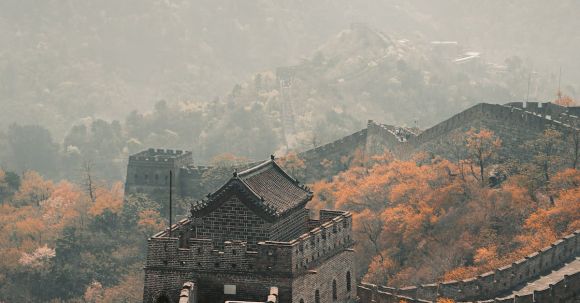The Great Wall of China is one of the most iconic structures in the world, spanning over 13,000 miles and attracting millions of visitors each year. But have you ever wondered how this monumental feat of engineering was built and why it was constructed in the first place? In this article, we will delve into the fascinating history of the Great Wall, exploring its construction techniques, the purpose it served, and its enduring legacy.
The Purpose of the Great Wall
Contrary to popular belief, the Great Wall was not built as a single continuous structure, but rather as a series of walls and fortifications constructed over centuries. Its primary purpose was to protect the Chinese empire from invasions by nomadic tribes from the north, particularly the Mongols. The wall served as a formidable deterrent, preventing incursions and safeguarding the Chinese heartland.
Construction Techniques
The construction of the Great Wall was an incredible undertaking that required the ingenuity and labor of countless workers. The builders used a variety of materials, depending on the region and time period. In the early stages, rammed earth was the primary building material, with workers compacting layers of soil and gravel to form the wall. As technology advanced, bricks and stones were also used, creating a more durable and visually striking structure.
The workers faced numerous challenges during the construction process. The Great Wall was built on rugged and often treacherous terrain, necessitating the use of innovative engineering techniques. Steep slopes were terraced to create a stable foundation, and watchtowers were strategically placed along the wall to allow for maximum visibility and communication.
The labor force behind the Great Wall was immense, with millions of workers involved in its construction. Convicts, soldiers, and peasants were conscripted to work on the wall, often enduring harsh conditions and long hours. The sheer scale of the project meant that constructing the Great Wall was a monumental task that spanned generations.
The Legacy of the Great Wall
Despite its original purpose as a defensive barrier, the Great Wall of China has come to symbolize much more than just protection. It is a testament to human perseverance and ingenuity, a testament to the power of unity and determination.
Today, the Great Wall stands as a UNESCO World Heritage Site and a symbol of Chinese culture and history. It attracts tourists from all over the world, who come to marvel at its grandeur and appreciate the remarkable engineering achievements of the past. The Great Wall also serves as a reminder of the importance of preserving our cultural heritage and valuing the lessons of history.
In conclusion, the construction of the Great Wall of China was a monumental undertaking that required immense labor and ingenuity. Built to protect the Chinese empire from northern invasions, the wall served as a formidable barrier that deterred would-be attackers. Today, the Great Wall stands as a testament to the power of human determination and the enduring legacy of ancient civilizations. It is a must-visit destination for anyone seeking to appreciate the wonders of the world and learn from the lessons of the past.





